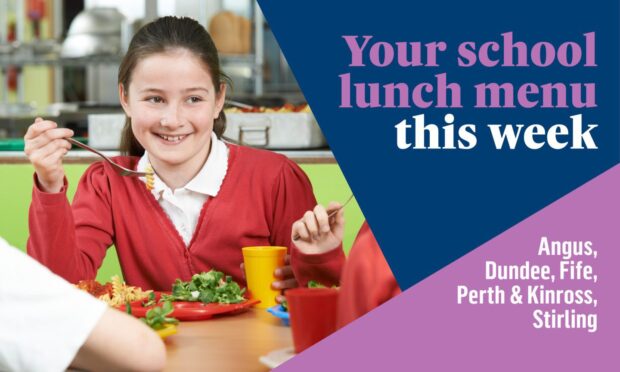As Rasmus Suikeli tests out an electronic carousel for Lego figures, Lex Mitchell-Wemyss builds a toy car from wood.
Meanwhile, Kara Izatt tells me how she wants to be an engineer and demonstrates pullies suspended from ceiling beams.
These children are lucky to be able to hone these skills in a remarkable workshop in the basement of their Fife school. A Los Angeles aerospace innovations facility inspired the lab.
What is a Makerspace?
East Wemyss Primary School has just opened Makerspace Downunder.
Makerspaces are spaces in schools, libraries and other places for learning science, technology, engineering and maths (STEM).
Makerspace organisers encourage the children to build, dismantle, investigate how things work and solve problems.
Teacher Tracey Ellicott had the idea to create a Makerspace for East Wemyss seven years ago as she toured the creativity hub for employees of a global technology firm.
She explained: “As I was walking round it, it came into my head that a building in our playground which used to be the public library had just closed and I thought imagine creating a space there like that for the children, but a scaled down version.”
The FabLab she saw in Los Angeles while at a science conference is where creative juices flow for innovators employed by Northrop Grumman Corporation.
Brainstorming lounges decorated with quotes from the likes of Einstein and Tesla flank work stations with equipment such as jet lathes, an optical bench and a 3-D printer where engineers test out their ideas.
Northrop Grumman’s FabLab
In East Wemyss Primary School Makerspace Downunder children have a Lego wall where they can build and link elaborate horizontal and vertical structures.
There’s a woodwork bench and numerous stations where they can learn about robotics, pneumatics, electronics and physics.
Huge pulleys suspended from roof beams give them hands-on experience of how force works.
Head teacher Yvette O’Neil said: “It’s full of possibilities.”
When Tracey returned from California she was given the go-ahead to create a Makerspace in the former library by her then head teacher and set about turning her ideas into reality.
And for two years her first Makerspace was hugely popular with both children and their parents, who joined in family sessions.
But the school’s nursery then needed the building.
Its contents were moved into the basement of the school, which had become vacant after years as a museum for the Save Wemyss Ancient Caves Society.
Covid and work needed to make the basement suitable for pupils to use put the facility on ice.
Makerspace gets bigger and better
Only now has the new Makerspace Downunder been launched – a bigger and better version of its predecessor.
It is stocked with weird and wonderful recycled materials collected by pupils, staff and parents, from plastic bottles and tubing to shower curtains and balloons.
Companies including defence firm Raytheon and Anstruther-based Metaflake have also donated kit.
Robotics equipment, iPads and a 3-D printer were purchased using £16,000 won by the first Makerspace. Out of 3,000 schools, it came first in the Rolls Royce Schools Prize for Science and Technology Prize in 2018.
Tracey has spent countless hours – including evenings and weekends – getting the space ready, with help from the school’s parent council, other parents and grandparents.
Now retired janitor Allan Baird helped realise Tracey’s vision, including making work stations and portable Tinker Trucks.
Parent Craig Arnott installed the pulleys. He is an oil rig inspector who saw the potential to upscale a smaller version using ceiling beams.
What do the young engineers think of their Makerspace?
Kara, 11, was among the first pupils to try out the new Makerspace. She said: “I think it is a wonderful space for engineering and technology and all the STEM stuff.
“My favourite bit is probably the woodwork or the electronics space.
“I like all that stuff and I want to be an engineer when I’m older.”
Lex said: “It will be a great space for science and just to come down and build things. I’m really excited about it.”
He and some P7 classmates were trying to fix a wooden car they had built which split as they nailed it together.
Cameron Murray said: “It’s probably one of the best spots in the school. My favourite is the woodworking.”
Pupils rip it up and start again
Max Graham remembered how much he enjoyed the first Makerspace when he was in P2.
He said: “I used to love it. I love breaking things up in the construction den and making things with wood and cardboard and bottle caps. I like using the Lego wall as well.”
Tracey, who specialises in science, will accompany classes during their Makerspace sessions until class teachers become confident in using it.
She said: “Eventually we want children to be crafting something out of wood, for example, that they can put a circuit on.
“It’s about giving them the confidence to explore, it’s about being creative, thinking about design and how to use materials for different purposes and solve problems.
Tracey hopes the Makerspace will evolve as the children use it.
She said: “We will learn from them and they will dictate the forward path.
“We will pick up on what they are running with, what takes their interest, what they are having difficulty with and it will grow.”
Tracey has high hopes for the Makerspace. They include clubs using the lab for activities outside school hours.
Yvette said few schools have anything comparable.
She said: “This is a really unique bonus feature for our school.
“Tracey has been in here weekends, late hours, all sorts to get it to where it is and she’s been really well supported by our parent council and other parents.”
Access to such a creative space has delighted parents.
One of them, Susan Rodger, said: “It’s brilliant for our school to have a space like this and to have a teacher as dedicated to science and STEM as Mrs Ellicott.”



















Conversation